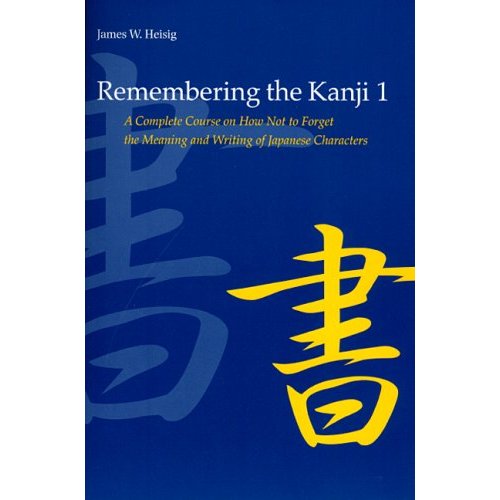For a long time I believed that I would never be able to truly read and write Japanese, more specifically the Kanji, no matter how much effort I put in.
The most common method of teaching Kanji relies on rote-memorization – the same method used by the majority of Japanese children. If you’re going to be immersed in a Japanese environment for 15 years or more, then I guess you’re going to remember them eventually, no matter how poor the method.
My Japanese teacher in Australia took another approach – just don’t teach Kanji at all! Suffice it to say that didn’t help much. I would find myself starting to recognize some simple common Kanji, but when I tried to write them I would only have a rough idea of the shape. And there are many Kanji that are very similar, often differing by only one stroke, so it’s very easy to mistake one Kanji for another.
The 2000 (or so) Kanji needed to be generally literate just seemed like an insurmountable obstacle.
Then I found Remembering the Kanji Volume 1 (known as RTK).

‘Remembering the Kanji Volume 1’
RTK was written by Dr James W. Heisig, based on techniques he used to learn Kanji himself. It gives you a systematic approach to learning how to remember, and write, 2042 Kanji (the JOYO kanji + a few extra useful kanji).
RTK1 uses a few techniques to make learning Kanji easier:
- component analysis to break up the kanji into smaller pieces (divide and conquer).
- learning the kanji in the order they are easiest to learn, rather than their frequency of use.
- imaginative memory – linking the components together in a scene you picture in your head. This is the real key to the method.
- flashcards to help you remember what you’ve learned. I’ll be writing more about this soon!
RTK isn’t without controversy – see here, here and here for some other views. The biggest issue for me is that you don’t learn how to say the Kanji – but that was not the aim of volume 1, it is covered in RTK volume 2.
Using the RTK method takes time and effort, just like anything else, and it may not be the right method for you, but I can honestly say it works for me when nothing else I’ve tried has.
The first part of the book is available for download on the publishers site, so you can give it a go and find out for yourself.
頑張ってね! (Stick with it!)